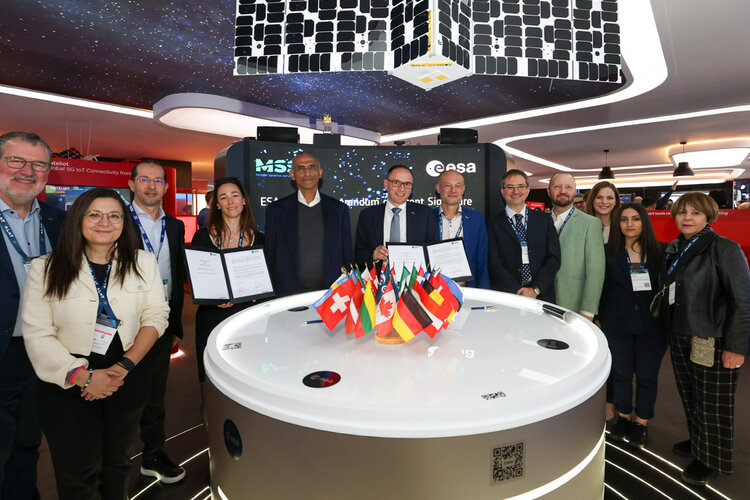
Copernical Team
US firm targets Moon landing with drill, rovers, hopping drone
 A drill to search for ice. A 4G network test. Three rovers and a first-of-its-kind hopping drone.
After becoming the first private firm to land on the Moon last year, Intuitive Machines is aiming for its second lunar touchdown on Thursday, carrying cutting-edge payloads to support future human missions.
The Houston-based company is targeting no earlier than 12:32 pm ET (1732 GMT) at Mons
A drill to search for ice. A 4G network test. Three rovers and a first-of-its-kind hopping drone.
After becoming the first private firm to land on the Moon last year, Intuitive Machines is aiming for its second lunar touchdown on Thursday, carrying cutting-edge payloads to support future human missions.
The Houston-based company is targeting no earlier than 12:32 pm ET (1732 GMT) at Mons Researchers analyze river bends to distinguish planetary channel origins
 Channels carved by rivers, lava, and ice all exhibit winding, sinuous patterns, yet a new study from The University of Texas at Austin has identified a fundamental difference in the way rivers bend compared to volcanic and ice-carved channels. This discovery may provide a new method for determining the origins of planetary channels where direct observation is not possible.
While the specif
Channels carved by rivers, lava, and ice all exhibit winding, sinuous patterns, yet a new study from The University of Texas at Austin has identified a fundamental difference in the way rivers bend compared to volcanic and ice-carved channels. This discovery may provide a new method for determining the origins of planetary channels where direct observation is not possible.
While the specif Lunar Data Center Demonstrates Success on Journey to the Moon
 Lonestar Data Holdings has reached a critical milestone with the successful testing and operation of its commercial data center payload while traveling through space en route to the Moon. This achievement marks a major step toward establishing the first-ever commercial lunar data center, reinforcing the vision of a robust and resilient space-based data infrastructure.
Since its launch on F
Lonestar Data Holdings has reached a critical milestone with the successful testing and operation of its commercial data center payload while traveling through space en route to the Moon. This achievement marks a major step toward establishing the first-ever commercial lunar data center, reinforcing the vision of a robust and resilient space-based data infrastructure.
Since its launch on F NASA Turns Off Voyager Science Instruments to Prolong Mission
 NASA has implemented energy-saving measures to keep the Voyager spacecraft operational for as long as possible, despite their decreasing power supply.
On February 25, mission engineers at NASA's Jet Propulsion Laboratory (JPL) in Southern California powered down the cosmic ray subsystem aboard Voyager 1, and on March 24, they will deactivate Voyager 2's low-energy charged particle instrume
NASA has implemented energy-saving measures to keep the Voyager spacecraft operational for as long as possible, despite their decreasing power supply.
On February 25, mission engineers at NASA's Jet Propulsion Laboratory (JPL) in Southern California powered down the cosmic ray subsystem aboard Voyager 1, and on March 24, they will deactivate Voyager 2's low-energy charged particle instrume SpaceX aims for Thursday Starship test flight after last-minute scrub
 Elon Musk's SpaceX is now aiming for Thursday to conduct the next test flight of its massive Starship rocket, following a last-minute cancellation on Monday. The world's biggest and most powerful launch vehicle is set to lift off from SpaceX's Starbase facility in Boca Chica, Texas, during a launch window that opens at 5:30 pm local time (2330 GMT). An earlier attempt set for Wednesday was postponed a day without explanation.
Elon Musk's SpaceX is now aiming for Thursday to conduct the next test flight of its massive Starship rocket, following a last-minute cancellation on Monday. The world's biggest and most powerful launch vehicle is set to lift off from SpaceX's Starbase facility in Boca Chica, Texas, during a launch window that opens at 5:30 pm local time (2330 GMT). An earlier attempt set for Wednesday was postponed a day without explanation. Space: the new frontier for smartphones at trade show
 Satellite communication is taking smartphones to new orbits at this year's Mobile World Congress in Barcelona, with companies showcasing gadgets connected to space in a bid to tap into the lucrative new service.
Infrastructure costs and technical and regulatory hurdles mean it will be some time yet before handsets worldwide are beaming calls and data directly to Earth orbit - even as firms
Satellite communication is taking smartphones to new orbits at this year's Mobile World Congress in Barcelona, with companies showcasing gadgets connected to space in a bid to tap into the lucrative new service.
Infrastructure costs and technical and regulatory hurdles mean it will be some time yet before handsets worldwide are beaming calls and data directly to Earth orbit - even as firms When two become one: engineers get Smile ready for launch

At the European Space Agency’s technical heart in the Netherlands, engineers have spent the last five months unboxing and testing elements of Europe’s next space science mission. With the two main parts now joined together, Smile is well on its way to being ready to launch by the end of 2025.
Call for interest: Biomass launch media event at Europe’s Spaceport in French Guiana

Call for interest
Biomass launch media event at Europe’s Spaceport in French Guiana
ESA signs new chip development for more resilient satnav

It is impossible to imagine our everyday lives – and Europe’s economy – without reliable satellite navigation. Accordingly, ESA prioritises developing and delivering more resilient positioning, navigation and timing technologies and systems into the future. NAVISP Industry Days saw the signing of an industrial contract between ESA and UK’s EnSilica Plc to develop a novel multi-band radio frequency receiver on a single chip, designed to simultaneously receive dual signal streams from all current and future satnav constellations to help overcome interference.
ESA and Mobile Satellite Services Association partner to advance space-based 5G/6G networks

With a new Memorandum of Intent (MoI) signed by the European Space Agency (ESA) and the Mobile Satellite Services Association (MSSA), seamless mobile connectivity that extends everywhere from rural areas to bustling cities has just become closer to reality. The collaboration aims to overcome current coverage limitations by seamlessly combining space and terrestrial systems, helping to close the digital divide across Europe.
